
An Interview with Turkish Ebru Master Ayla Makas The Spiritual Legacy of Ebru
Aug 05, 2012 Interview

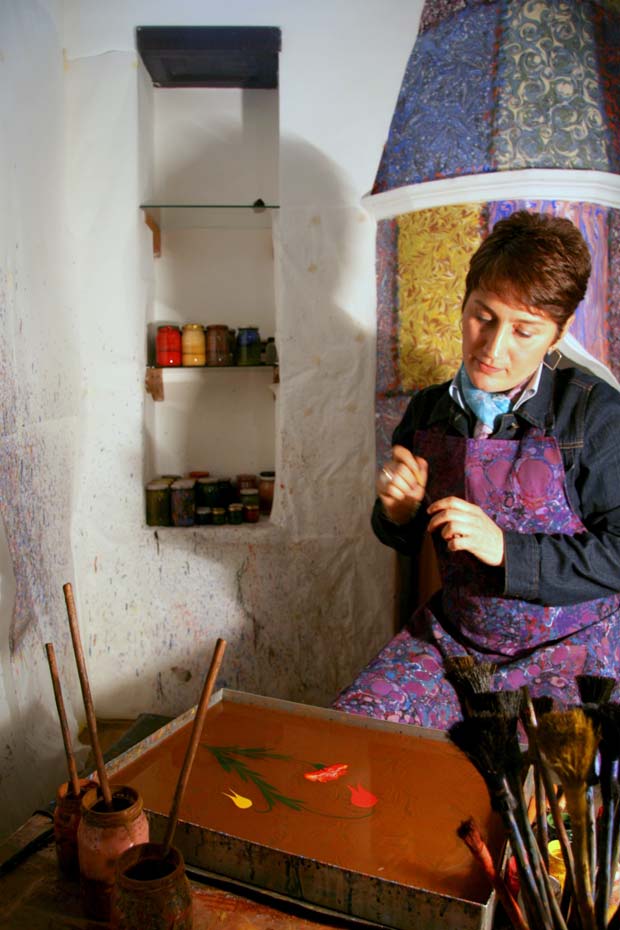 Ayla Makas / Courtesy of the Artist
Ayla Makas / Courtesy of the Artist
The traditional art of paper marbling has been a practiced throughout Europe and Asia. While its specific origins are debated, the term “ebru†has come to be the standard nomenclature in Turkey. Ebru is performed in a tub, or 'tekne', of Tragacanth Gum and water solution. A prepared mixture of paint and ox bile is then dropped in the viscous water, and in turn floats on top of it. Completed, paper is placed carefully in the tub to absorbs this fluid composition. Traditionally, used to compliment calligraphy and decorate the space between the inside cover and the first page of a book, it is today, however, practiced as an art. Completing her apprenticeship under Hikmet Barutçugil and Fuat Başer in 1998 made Ayla Makas one of the few female Ebru Masters in Turkey. Over the last decade, she has been working as a master and teacher of the art dividing her time between the Caferağa Madrasa in Istanbul and her own private studio. I was granted the fortunate opportunity to sit down with her and her apprentice, Ozlem Canyurek who I would especially like to thank for translating our conversation.
The Islamic arts have had an influence because this is what I believe and want to see in my work. I try to combine other Islamic arts together, like the inclusion of calligraphy in my ebru. I want to translate what I believe into my work. I want it to be visible. So, I use Islamic symbols. For example, in ebru, the tulip symbolizes God. Because of that, the head of the tulip is normally upward but in one work, I bend it so that the head of the tulip looks down. I am trying to convey that I am just a small spot and God is looking over me. This is a way of showing my belief. Sometimes I add tears – symbolizing myself, a modesty, which is a necessity in ebru. Being humble is very important. If someone says, "I know everything," they know nothing about life. This is the key of life.
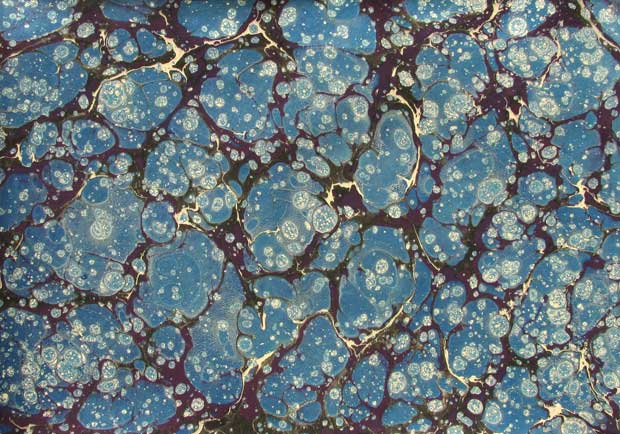 Ayla Makas / Ebru / Courtesy of the Artist
Ayla Makas / Ebru / Courtesy of the Artist
During the week, I spend three days at the madrasa and two days in my private studio. One of my objectives is to pass this art to as many people as possible. It's a legacy – it must be taught otherwise it will be forgotten. I believe everyone has a good heart, attempting to learn or to teach this art is a good thing. Working at the madrasa, I accept all students. The master and apprentice relationship does not exist there. Students want to learn the technical part of ebru and that’s it. Even though I am teaching them only the technical part students still want to learn and this is a good thing. However, we cannot expect every institution, every person or every master to teach the spiritual part of this art, to apply these rules to every student at madrasa. After doing this for two or three years, I told myself that if I'm teaching this art, it must be different from others because at the same time I'm teaching them the love of God.
My studio is very special. Some schools or studios give lessons for six, seven months or even one year. It's not enough for this art. We are searching for beautiful things. But more important is to find a beautiful heart. In my private studio, I do not accept all students. If they are talented then I can say, "Yes come and work with me." But this takes time and so the student must be patient.
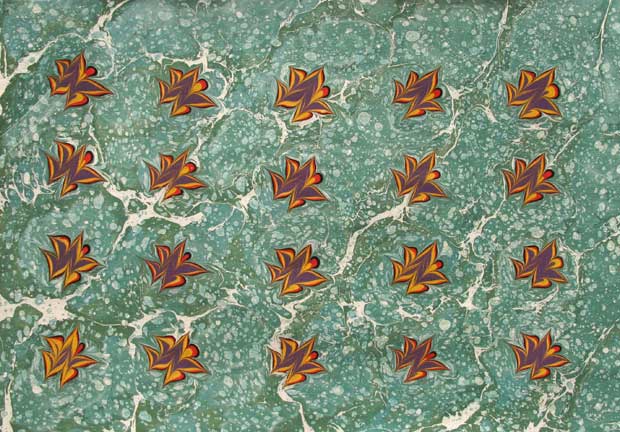 Ayla Makas / Ebru / Courtesy of the Artist
Ayla Makas / Ebru / Courtesy of the Artist
First of all, he or she has to be patient because this apprenticeship takes a very long time, a minimum of five years. To make good ebru is important, but more than that is to be a good human. I think patient and talent combined with love for this art make a good student who can join my studio. This is very special.
In Istanbul there are a few people that are really good in this art. But when I talk with them, I feel there is something missing. An apprentice would have to be open to the idea of working together with their master’s mentality. It's a spiritual art with a certain knowledge about it. The mysticism of this art is really important. And they must be open to these ideas. To make a beautiful ebru piece doesn't mean as much if we aren't good human beings.
The quality of a human being, the love and the patience – they are all in balance. You have to be an artist but you have to be a good human being – at least you should try to be. This mystic idea is the essence of ebru. If you are familiar with the thoughts of Rumi, then the love of God is not separable from ebru. The core of ebru is just to try to be a good human being and to improve as much as possible. You can learn and master ebru perfectly but that doesn’t mean anything if you don't improve yourself through ebru
.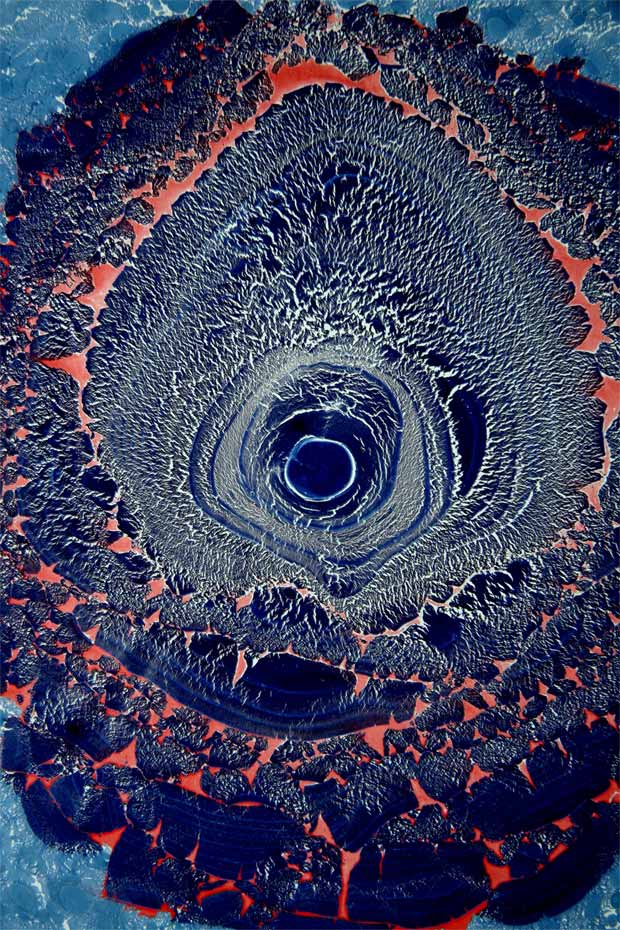 Ayla Makas / Experimental Ebru / Courtesy of the Artist
Ayla Makas / Experimental Ebru / Courtesy of the Artist
When you start learning ebru – the beginning is a craft, a technique. But after many years, when you are committed to ebru if you are able to produce something from yourself, with this love, then it's art. Perfecting your ebru skills is very much related to finding the right master. I found the right master and worked with him, a lot. This took about three years. Today, however, is a lot easier than even ten years ago.
The other special part is more about the way we look at the world, the way we live. When I found ebru, gradually, I fell in love with it and the idea of it. It held parallels with what I believed in my personal life which actually evolved. Like in other arts, in ebru you should’t have any negativity in yourself in order to 'do'. I learned I just had to commit myself to the art. What I am trying to do right now is to continue this tradition, this legacy. The apprentice/master relationship doesn't end when you get a diploma.
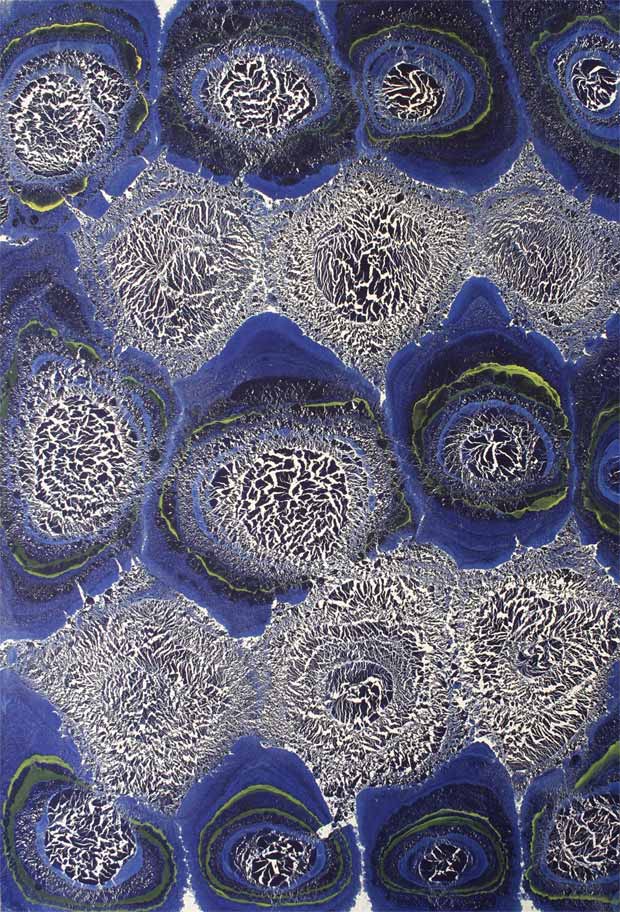 Ayla Makas / Experimental Ebru / Courtesy of the Artist
Ayla Makas / Experimental Ebru / Courtesy of the Artist
I do not use these spiritual symbols in a traditional way. They are interpretations, my interpretations. Because of that I am Ayla Makas. These forms are interpreted into my belief. How I feel, what I believe becomes a part of my work just like this whirling dervish. I do not want to be limited by conventional symbols. While I believe in a traditional ebru process, I must move forward from our ancestors otherwise I'm not doing any good to myself nor to the art.
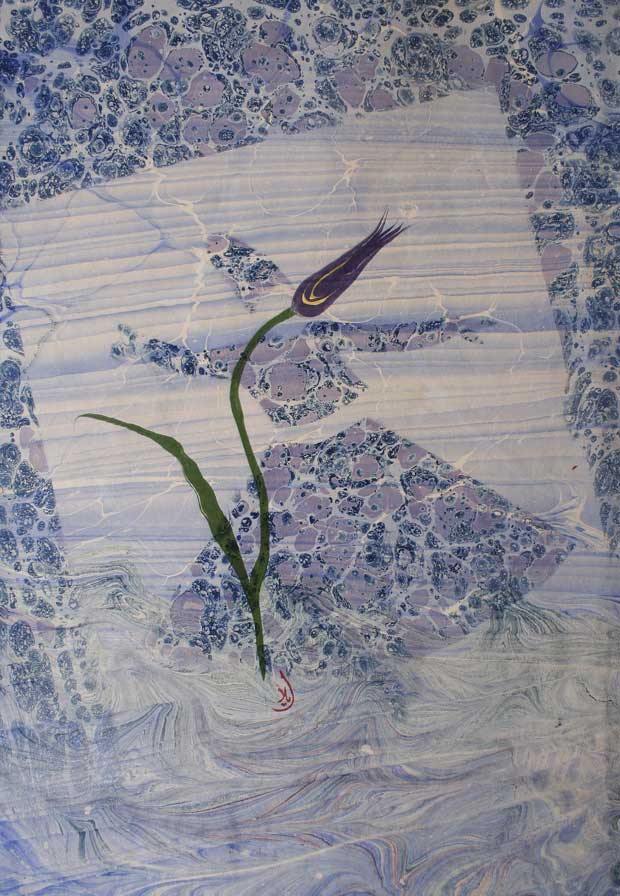 Ayla Makas / Ebru with the whirling dervish / Courtesy of the Artist
Ayla Makas / Ebru with the whirling dervish / Courtesy of the Artist
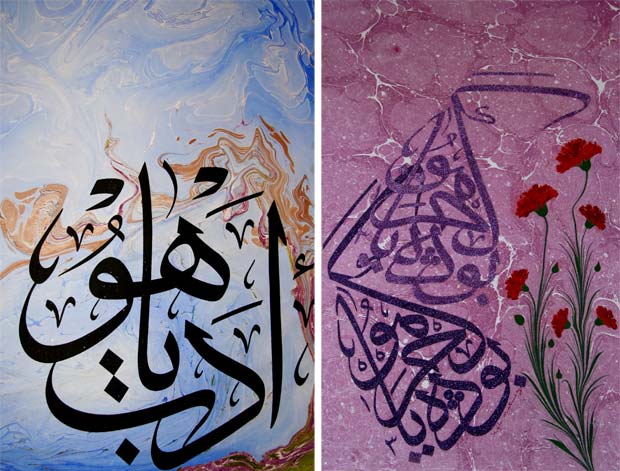 Ayla Makas / Floral ebru with calligraphy / Courtesy of the Artist
Ayla Makas / Floral ebru with calligraphy / Courtesy of the Artist
It's not possible to do everything in a tub because when working with the water, there are limitations, it isn't like contemporary arts where there are no restrictions – you are physically confined. I want to respect the physical limits of the art: 35 cm by 50 cm - this is the classic size of the tub. The dimensions of the tub are limited but the depth of your feeling isn't. What you want to do is, almost, limitless. Your mentality is limitless. There are only physical restriction which you may overcome by combining ebru with other arts but then it wouldn't be the classical ebru anymore. I feel that those who do this sort of thing only see the surface or the final product. The way I try to evolve my work is by staying within the deep mentality of ebru. For example, traditional calligraphy is hard to learn. I have been studying it for eight years and I'm about to get my certificate. People who don't have classical training they do so many good things with calligraphy but that is not the traditional calligraphy. It’s the same with ebru.
Also, I'm not sure if these progressions will be sustainable in the future. People are searching for new things but I don’t know whether this motivation, this particular reason for exploration will sustain the art in the long term. It seems as though we would just do it out of boredom or curiosity. Only those who have reached the level of Master may be successful in trying to evolve it. When I make ebru, I pour my time, my soul and my feeling into it. Using my hand with my heart is satisfactory for me.
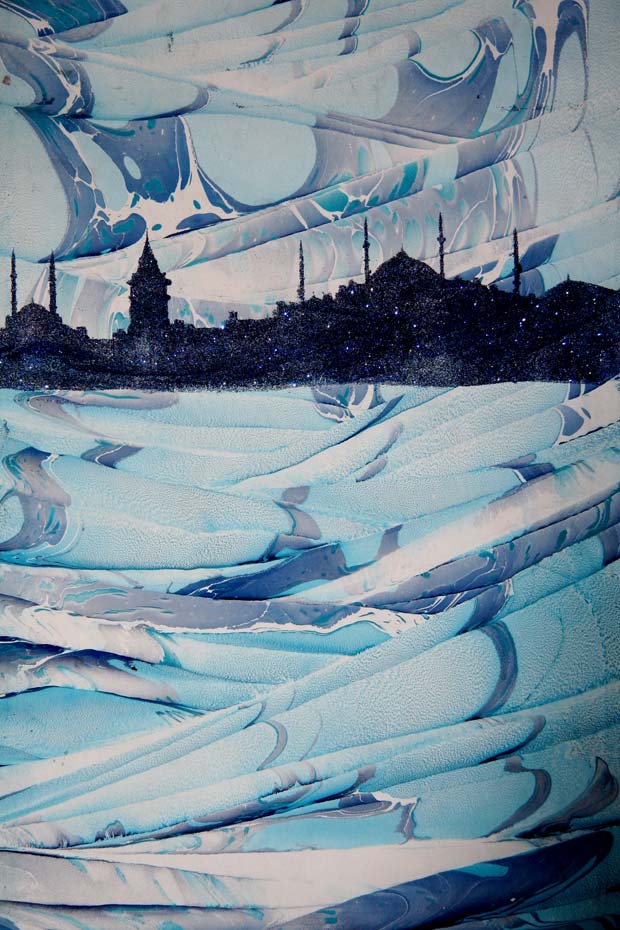 Ayla Makas / Istanbul / Courtesy of the Artist
Ayla Makas / Istanbul / Courtesy of the Artist
As a master, I want people to understand the essence of this art and follow the same path I walked through. Not only to continue this legacy but to take it to another level. I respect the traditional part but I want to combine it with the modern approach. When students join my studio, they must already have the knowledge of the traditional art. This is very important, it's the foundation of ebru. We need to learn and to respect it.
My soul belongs to the traditional history of ebru but other than that I do not belong to the same world as the old masters. I see myself as an ebru artist. Part of me is traditional and another part is quite contemporary. If you take one part out then I’m no longer Ayla Makas, I’m no longer me, a combination of all these elements, all these personalities.
Usually artists compete with each other. I don’t do that, I don’t like the idea of competing. I just try to improve myself. From time to time, I look back at what I have done and how much I have evolved. I don’t push my limits and compare myself to others. I just like the idea of seeing the reflection of an artist in my work and my beliefs. I try to escape from doing solo exhibitions because I could do it every year or at anytime. The reason for that is, I'm not searching for myself and I'm not teaching people to search for themselves, I am searching for ourselves - the unity with my students. Have you ever watched the hajj? When I went there, I realized in this crowd, I am just a tiny dot in the universe – so there is no need to exaggerate my existence.
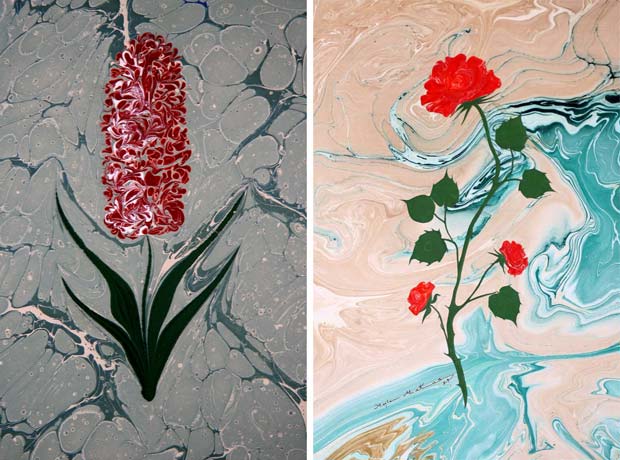 Ayla Makas / Floral ebru / Courtesy of the Artist
Ayla Makas / Floral ebru / Courtesy of the Artist
Comments
Add a comment